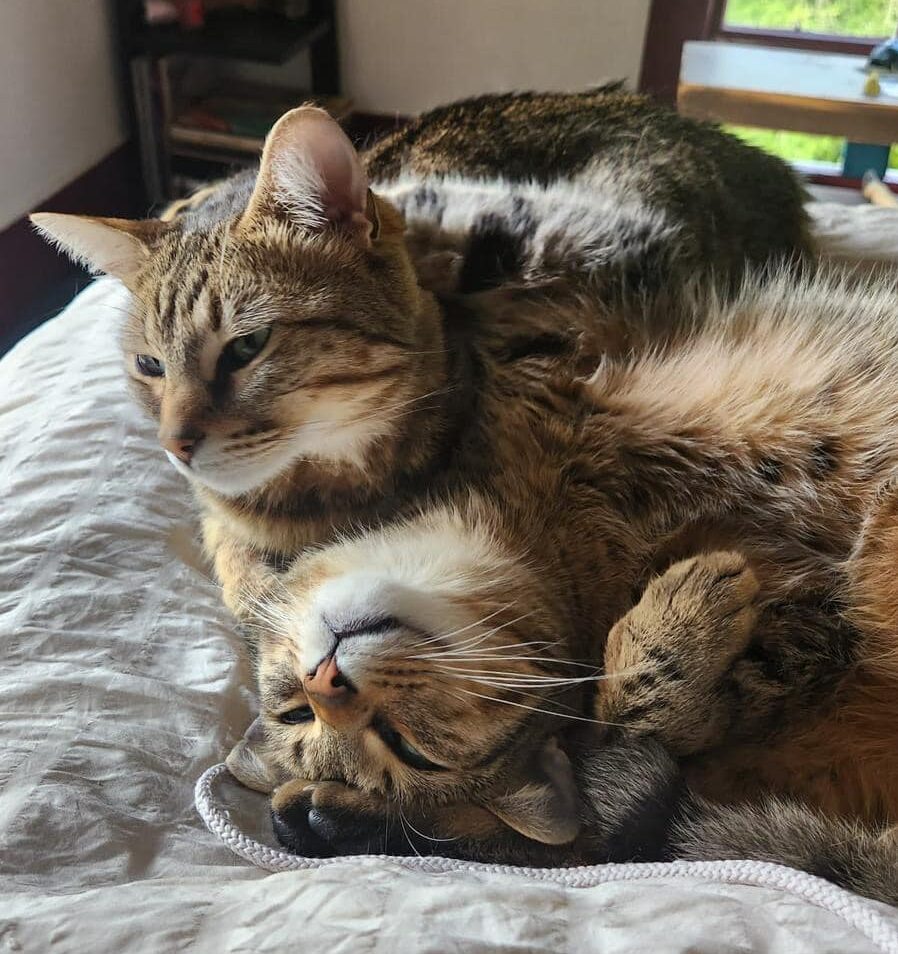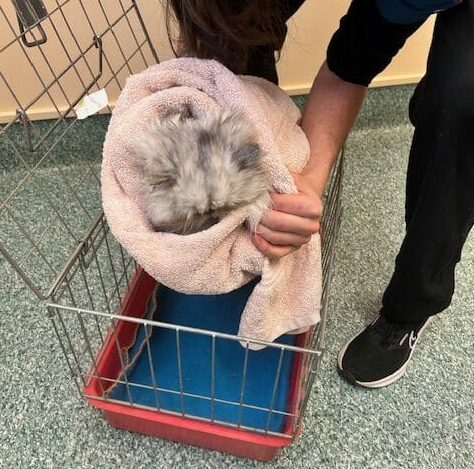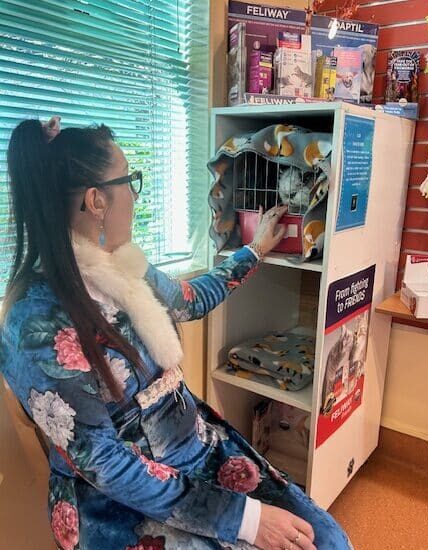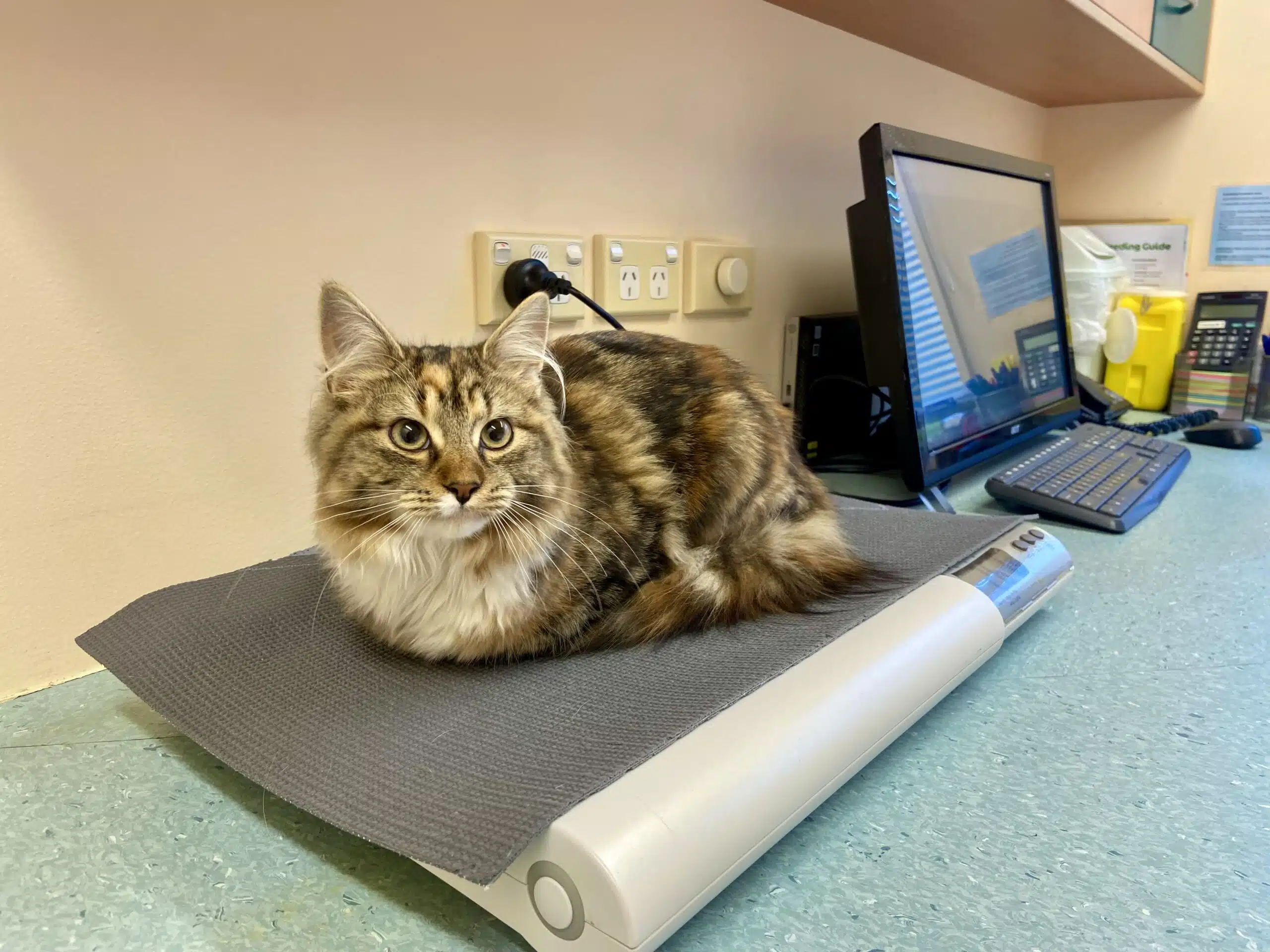Visiting The Vet
There aren’t many cats (if any??) that would beg to come into a vet clinic if we were to drive or walk past with them. Some dogs – YES. Most cats – NO! However, there ARE some cats who become very settled, purr, explore and “relax” once they in the consult room. Luckily for them and their “servants”, visiting the vet can be a very enjoyable time.
My own cat is better suited to home visits. At home he is very affectionate, loving and relaxed. As soon as he is in the carry cage, extreme fear and distress kicks in. He meows (a hideous sounding meow full of torment!) and he will go wild trying to get out of the cage. He must be in a fabric/canvas cage as I fear for his teeth as he tries to bite and chew himself out any cage, he will persist and end up bleeding if it is metal.
These are two of the extremes and there’s many friendly, furry felines in between. As a vet, I’m still amazed at (and love!) the contrast between different cats. Each one is so unique.
So, here’s a few tips, suggestions, tricks and options for our beautiful cats and kittens when bringing them to see us. Please feel free to discuss any of this in more detail with any of our vets or nurses. We would love to help.
At Home

Siblings Bearski and Seester relaxing at home
Where possible, consider the timing of their appointment. A hungry cat can be a very “hangry” cat! If possible, time their visit for when they would normally be around the house, so they don’t have to be locked in and anxious for hours leading up to the journey.
Make sure you’ve done your yoga, meditation and had coffee prior.
Feliway® is your friend. Feliway® is a spray, it comforts and reassures cats, reducing signs of unhappiness and helping them to stay calm in stressful environments. It works by emulating the natural pheromones released by a mother cat to calm her kittens. It is similar to the substance that cats rub onto your leg or furniture. When they mark their territory with this substance, they are marking it as safe. Feliway® is the synthetic version of this and when your cat smells it, it will signal to them that they are in a safe space. You can spray this in their cage and/or onto a towel to cover the cage. Ideally 15-30 minutes before you put your furry friend in the cage. We have this in the clinic and use it every day in our cat consults and the waiting area. It is sprayed onto a towel in the consult rooms and onto the blankets in the waiting area. “Feliway® blankets” are available in the cat corner to cover their cage while waiting (see below)

The “cat burrito”
Cat Carriers
The type of cage makes an enormous difference! The bigger, the better. Generally, the most difficult cages to get a cat into at home are front-loading cages. The easiest cage is a top-loading cage.
If you are struggling with a front-loading cage, try putting your cat in back end first and/or wrap them in a towel (like a sausage or burrito), then “feed them” into the cage backwards. A towel “burrito” can also be useful for top-loading cages to prevent the “starfish” scenario.
Cover the cage with a large towel or blanket (Feliway® first)
Drive carefully around corners and not too fast. Cats can get car sick!

Tinkerbell in the cat waiting area.
In The Clinic
On arrival, please feel free to come and check out the waiting room first. If it is busy or noisy, you may prefer to wait in the car with your cat, it may be a quieter space, and we can come and get you when ready.
Or find a quieter/ out of the way spot to settle your cat before checking in. We have a” cat corner” to the very right of reception. Next to the seats there are some cubby holes to place cages in and Feliway® blankets to cover the cage.
All dogs should be on a lead and under control by their owners. However, if one looks to be approaching, put yourself between them and your cat and feel free to ask the dog owner to keep their dog at a distance to avoid further stress. I know a lot of dogs are “quite fine with cats”, however not every cat is “fine with dogs”, especially if they’re confined to a cage. It is best not to have them sniffing around.

Rudy relaxes on the scales
The Consult Room
- Once in the consult room, if time allows, it’s a good idea to open the cage and just allow your feline friend time to adjust and explore on their own if they so wish. As a vet I often like to get the history and take notes for a few minutes, allowing your cat to settle or explore. I can then see if they’re going to venture out on their own OR hide as far back in the cage as possible!
- When handling, if possible, less is more. Sometimes you can entice a cat out with a few treats. If not (for top-loading cages) gently tipping the cage (sometimes vertical) is often preferable to grabbing our wee furry friend and pulling them out.
- Once on the table we try to make things as comfortable as possible with a non-slip mat on the scales and a towel (with Feliway®) on the table. Some cats prefer to be under rather than on top of this towel. Some prefer a human knee and contact. We are happy to accommodate whatever is most comfortable and least stressful for your cat (although examining them under the table can be tricky …)
- At any time during your visit, all of us are incredibly open to feedback, requests and suggestions. Please feel free to help us to help you both! Let us know if there is anything you’re finding stressful or feel that your cat might be struggling with. We want you to both be happy and it is always easier to examine a more relaxed pet. A calm and happy owner means more chance of a calm and happy cat and vice versa.
Sometimes despite all of the above, mild oral sedatives or natural supplements are useful and/or needed to achieve a useful examination and minimise stress. Please chat to us before your cat’s appointment if you would like to try any of these options. We are happy to prescribe medication in most cases. Calmex® is a natural supplement available over the counter at reception.

Kim Green’s cat Louie
We look forward to welcoming and helping you soon!
Kim Green

Recent Comments